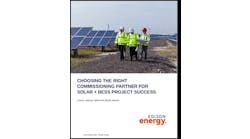Energy efficiency is a good thing because it cuts back on energy use and reduces our utility bills, right? True, but we limit its possibilities when we think about energy efficiency only that way.
That’s the over-riding message from “Capturing the Multiple Benefits of Energy Efficiency,” a recent report by the International Energy Agency (IEA).
The report points out several energy efficiency benefits that governments habitually fail to fully quantify.
For example, energy efficiency has macro-economic advantages – it boosts tax revenue and creates jobs. And on the micro-level businesses can become more competitive by wringing as much value as possible from their energy dollars.
Energy efficiency has health benefits – it reduces air pollution and therefore lowers instances of respiratory disease. It may even reduce anxiety and depression where fuel poverty exists, the report says.
Do we need to do a better job quantifying the benefits of energy efficiency? Give us your views on our LinkedIn Group, Energy Efficiency Markets.
And energy efficiency helps make our overall energy delivery system more cost-effective. Utilities can avoid building power plants and transmission lines by using existing infrastructure to greater advantage.
Most of these ideas are already raised frequently to warrant use of public or utility funds on energy efficiency. But often governments present them purely as descriptors without statistical backing
However, IEA says that if governments start to recognize – and quantify these benefits – we may more quickly develop the vast amounts of still untapped energy efficiency in world economies.
World investment in energy efficiency reached $300 billion in 2012 – equal to investments in coal, oil and gas generation. This investment produced savings larger than the energy provided from any other fuel. This means that energy efficiency, the negawatt, has become the primary fuel used in the world, the report says. That’s why it’s often termed the ‘first fuel.’
If the world pursues all economically viable energy efficiency, the resource could boost economic output through 2035 by $18 trillion – larger than the current size of the economies of the US, Canada and Mexico combined, according to the IEA.
But the world will fail to tap as much as two-thirds of its energy efficiency potential unless policies change.
So what must government do? The IEA report offers several models they can use to quantify benefits. It also shows some of the results of using a statistical approach.
- Manufacturers found that the payback period for energy efficiency fell from 4.2 to 1.9 years when they monetized the productivity and operational gains brought to internal rate of return by energy efficiency.
- Energy efficiency technologies can make homes warmer and drier, which makes for healthier conditions. For every $1 invested, energy efficiency can provide up to $4 in benefits when the cost of medical care, lost work time or child care costs are considered.
- On a more macro scale, changes from energy efficiency can induce GDP growth rates of 0.25 percent to 1.1 percent
Quantifying the benefits will lead to more energy efficiency because it will draw investment dollars to the resource. Right now, energy efficiency has a lot of trouble competing against supply side resources, especially shale gas and oil, for public and private funds, according to the report.
With more data on hand, governments and utilities might stop thinking about energy efficiency as an expense to be born and instead as an investment to be pursued.
The IEA report is available here for a fee. A free executive summary is available here.





